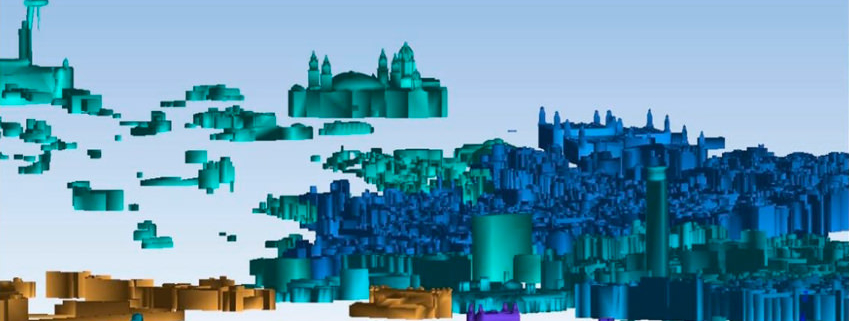
We are interested in studying how to use the analysis of structured and unstructured data to address societal challenges such as energy efficiency, e-government, or public safety. More specifically, our research is related with in semantic and open data for smartcities and analysis of textual information.
Summary
1. Efficient querying of semantic data:
Querying semantic data is inefficient due to reasons such as runtime inferencing over very large amounts of data, the variation in the types of queries which may require different indexing schemes, or the necessity to reason jointly about semantics and geographical information.
2. Approximate query answering:
City data is sometimes unavailable at the desired granularity, too expensive to obtain, or may be differently related to other city data when moving from one place to another. In these cases, queries that used to work in a city, and which are semantically reasonable to expect an answer, cannot return results.
3. Integration of urban open data (planned):
The success of applications in any domain has traditionally relied on the existence of (useful, correct) data. Cities are currently generating large amounts of data in many formats and of different qualities, although the precise data required to make decisions is usually not readily available. The integration of many sources of open data has the great potential to fill in information gaps and provide enough data to enable deep analysis and the discovery of patterns. This is a direction that can provide better data for all the other research efforts within our group.
4. Identification of hidden patterns from a collection of homogeneous textual documents
The identification of patterns on textual sources requires multiple tools and the applications of different techniques depending on the type of pattern we want to discover. However the automatic identification of relevant entities in textual documents, the analysis of their relationships (including hidden relations), and the study of this information in time and space, would let non-experts users to uncover useful information. Basic statistical tools are not enough to analyze this information and there is a lack of integrated tools for textual analysis, combining natural language processing, data mining techniques and big scale.
5. Spatio-temporal analysis of this entities and relations.
The spatio-temporal analysis of entities can provide very useful information. For example, the concentration of citizen complaints in a specific area and period of time may reveal a serious problem that must be taken care of. In the administrative applications, the temporal analysis of the number of projects assigned to a specific department could reveal a drastic cut of budget if it is compared with previous terms.
Research projects:
JSA with IBM, 2013-2015, collaboration with IBM and Agencia de Ecologia Urbana de Barcelona. Access to the exploration and navigation tool on request (undergoing changes). Collaboration with Rosario Uceda, T.J.Watson IBM Research. H2020 projects GrowSmarter and ASGARD.
Objectives
- Identifying the appropriate semantics which allows a good expressiveness / computability tradeoff, and parallelization of query execution over single computing resources.
- Massive distribution and parallellization schemas across resources, including indexing.
- To provide approximate and semantically similar answers to these questions rather than no answer, and compile a benchmark of representative queries over urban data; these can be used to quickly find out what data is not available and find alternative ways to work with the existent data that are still useful.
- Development of tools to extract the typical entities and to the identify explicit or hidden relations.

